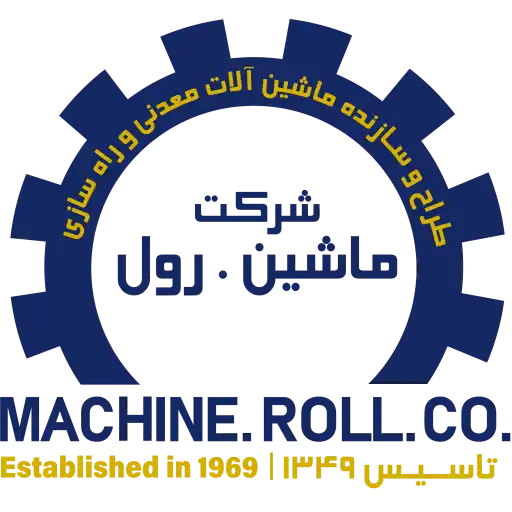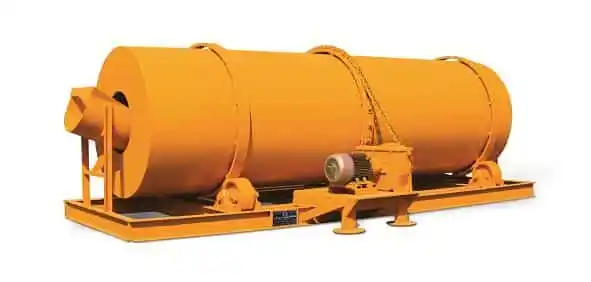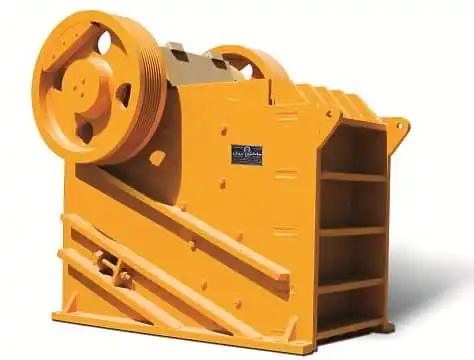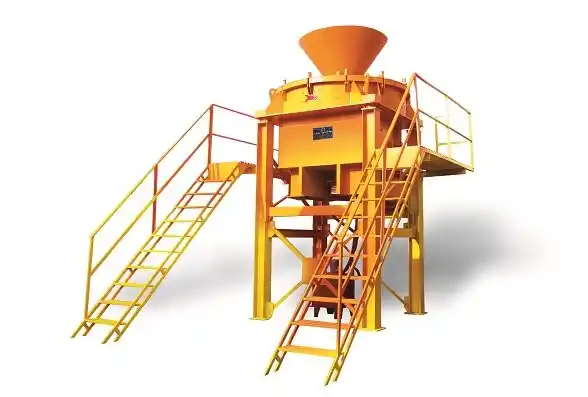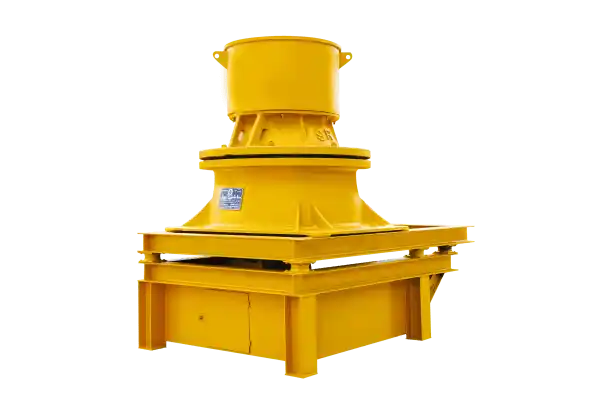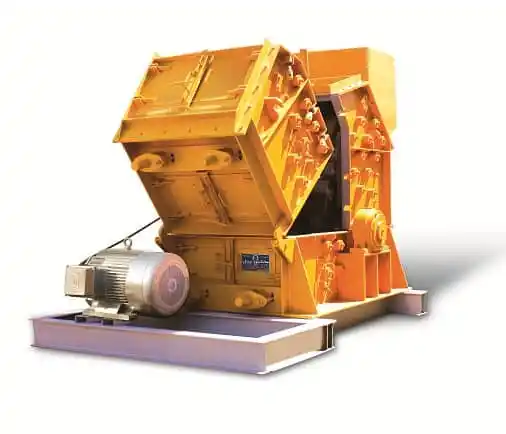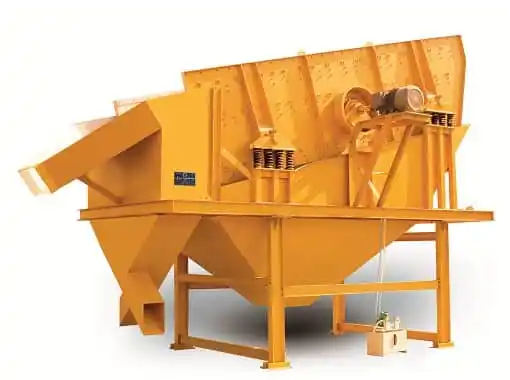What is a Scrubber?
The Machine Roll Company scrubber is an industrial device used to wash, clean, and separate minerals from impurities and contaminants. This device is mainly used in mining processes and mineral processing industries, and is especially important when the minerals are covered with mud, soil, clay, or other impurities.
Minerals are mixed with water in the rotating chamber of the scrubber. The water flow moves the contaminant particles, and these particles are removed by contact with each other and the body of the device. This process washes minerals and helps to clean them in order to produce quality materials in crushing lines.
How the scrubber works
The scrubber mechanism involves a process of washing, separating, and removing impurities from minerals, which is carried out mechanically using water and friction. This device is specifically designed to wash rocks, sand, and minerals that are stuck to mud, silt, or impurities such as clay and soil.
A scrubber usually consists of a rotating drum into which minerals are introduced. As the drum rotates and water is sprayed, the minerals collide with each other, and the friction between them causes the contaminants and deposits to separate. The impurities are then separated from the minerals and discharged from the device.
The operation of a scrubber can be described in more detail as follows: Initially, minerals (rocks, sand or other minerals) are fed into the rotating drum or washing section through the inlet of the machine. The rotating drum is the main part of the scrubber, which is usually a large, wear-resistant cylinder. As the drum rotates, the minerals collide with each other and the friction between them helps to separate mud, clay and surface impurities.
The rotating motion of the drum and the impact of the minerals with each other and with the inner surface of the drum create the friction necessary to separate the sediments and contaminants. Lighter materials (such as mud and silt) are washed with the water and separated through the discharge section or overflow, and heavier materials (such as washed rocks and minerals) are discharged from the other section.
Water is introduced into the drum through spray nozzles or a water injection system. This water flow helps to separate contaminants and wash the material. The water usually combines with minerals and carries the washed material to the outlet.
In this way, the minerals move forward by the anti-wear spiral blades inside the device. The minerals are cleaned by the pressure of the weight in the water while moving and throwing the materials from top to bottom due to rotation and soft rubbing. Finally, the materials exiting the scrubber after the washing and cleaning process are poured onto a sieve for screening and separation.
The operation of this device in mining and mineral processing processes includes several key steps, as follows:
- Raw material input: Minerals are fed into the scrubber via conveyors or other conveying systems. These materials typically include rocks, sand, dirt, and impurities that need to be separated from the primary minerals.
- Water washing: The materials inside the scrubber are washed with water. This removes fine particles of dirt and other impurities from the surface of the mineral materials. This process may be done by spraying water or by a continuous flow of water into the device.
- Material movement and rotation: A scrubber typically consists of a drum or rotating section. This rotating motion creates friction and collision between the different materials. The friction, along with the water, helps to remove fine particles and impurities from the surface of the mineral materials.
- Impurity separation: Due to differences in particle size and density, impurities are separated from the main material by the water flow. This process is usually designed so that heavier materials such as rocks remain at the bottom of the scrubber and lighter materials such as dirt and sand are transported to the outlet.
- Cleaned material output: After washing and separating impurities, the cleaned material (which mostly consists of high-quality minerals) is removed from the scrubber and is ready for the next stage of the extraction and processing process (such as crushing or grinding).
Scrubber application
Scrubbers, as a device for washing and separating impurities from minerals, have numerous applications in the mining and material processing industries. These devices are mainly used to prepare minerals before extraction and processing processes. Here are some of the most important applications of scrubbers:
1. Washing minerals from impurities
- One of the main applications of mineral scrubbers is to wash minerals from soil, mud, organic matter, and other impurities. This washing helps to clean the minerals from fine particles and impurities that may affect the quality of the final products.
- For example, in gold, iron ore, and coal mines, scrubbers are used to separate soil and mud from leached minerals.
2. Preparing minerals for further processes
- In many mines, minerals must be washed before entering further processing steps such as crushing, grinding or separation using flotation or granulation. Scrubbers help to remove impurities at this stage, preparing the minerals for the next steps.
- This process is particularly important in the extraction of sensitive minerals such as gold, copper, or iron ore.
3. Increase extraction efficiency
- Scrubbers are used especially in the mining process to separate useful materials from waste materials. By separating impurities, these devices increase the purity of the extracted minerals and, as a result, increase the efficiency of the mining process.
- This reduces extraction costs and increases the production of high-quality minerals.
4. Separation of organic matter
- In some mines, minerals contain organic matter that must be separated before entering other processes. Mineral scrubbers can be used to separate these organic materials from minerals, especially when the organic matter could harm subsequent processes or affect the quality of the final product.
5. Gold mining
- In gold mines, scrubbers are used to wash soil and gold minerals. This washing helps to separate fine particles of soil and excess materials from the gold minerals, ultimately resulting in a final product with higher purity.
- This process is very important in gold extraction methods such as cyanidation and flotation.
6. Iron ore mining
- In iron ore mines, scrubbers are used to wash mined ore and remove dirt and other impurities. This helps improve the quality of the ore and makes it easier to prepare for further processing.
- Washing iron ore with a scrubber is especially important for separating fine veins of unusable ores.
7. Coal mining
- Mining scrubbers are used in coal mines to wash coal of mud, dirt, and impurities. This improves the quality of the coal and reduces the amount of waste in it.
- Scrubbers are used in these mines, especially in coal washing to improve subsequent processes such as crushing and separation.
8. Increasing productivity in high-capacity mines
- In mines with high extraction capacity, scrubbers act as an initial step in the extraction process. These devices are especially essential for large mines where large volumes of material need to be washed and separated.
- High-performance scrubbers and effective washing help large mines extract and process materials more quickly.
9. Mineral washing for flotation processes
- In the flotation process (a process used to separate minerals based on differences in their surface properties), thorough washing of the minerals is of great importance. Scrubbers can be used as an initial step to remove impurities from the minerals before they enter the flotation process.
- This washing helps improve the performance of the flotation process and increases the recovery rate of minerals.
10. Mineral washing for granulation processes
- In the granulation process, minerals need to be washed to produce uniform granules. Scrubbers help to produce high-quality granules by thoroughly washing the materials, which are ultimately used to produce products such as fertilizer, cement or other minerals.
11. Reducing the use of chemicals in extraction processes
- Scrubbers can help reduce the need for chemicals used in later processing stages by removing impurities early in the extraction process. For example, in processes such as cyanidation for gold extraction, washing minerals with a scrubber can reduce the need for chemicals.
12. Washing of small stones and portable materials
- In some mines, minerals are extracted in the form of fine, crushed rocks. Scrubbers can effectively wash these rocks and remove excess material, especially when the fines are causing blockages or reducing the performance of subsequent processes.
Advantages of the device
As a device for washing and separating impurities from minerals, a scrubber has many advantages in mining and mineral processing processes. Below are some of the key benefits of a scrubber:
1. Increase the efficiency of the extraction process
- Scrubbers help to make subsequent processes, such as separation and extraction, more efficient by removing impurities from minerals in the early stages of extraction. This allows post-washing processes to easily extract high-quality materials, while consuming less time and energy.
2. Cost reduction
- The use of scrubbers reduces the need for complex and costly separation processes. Because impurities are separated from the minerals, other processes can be carried out faster and with less energy consumption, which in turn reduces production costs.
- Also, by reducing the volume of waste and useless materials, the costs of processing and disposing of waste are also reduced.
3. Increasing the quality of final products
- Scrubbers effectively remove fines, silt, and other impurities from the surface of minerals. This washing improves the quality of the final products. For example, in gold or iron ore mines, this washing results in a purer, higher-quality final product.
- This increase in quality increases the selling price of final products in the market.
4. Continuous and long-term performance
- Scrubbers are designed to operate in harsh conditions and can operate effectively for long periods of time without loss of performance, making them a vital and reliable part of mining operations.
- Especially in high-volume mines, the use of continuous-operation scrubbers improves production efficiency.
5. Increasing mining productivity
- The thorough and effective washing of minerals in scrubbers makes more minerals available for subsequent processes. This helps mines increase production efficiency and reduce mining operation time.
- Also, scrubbers can effectively separate waste materials from useful materials, which helps increase mineral extraction capacity.
6. Saving water
- Some scrubbers, especially models that have a water recycling and treatment system, can reduce water consumption. By recycling the water used in washing and reusing it, mines can effectively manage water consumption and make good use of existing water resources.
- This feature is especially important in arid regions with limited water resources.
7. Reducing pollution and preserving the environment
- Scrubbers help reduce the amount of waste entering the environment by removing impurities and sludge before it enters other processes. This process can help reduce environmental pollution from mineral extraction and processing.
- Also, by better separating excess materials, the environmental burden from waste disposal is reduced.
8. Flexibility in various mining processes
- Mineral scrubbers can be used in many different types of mines and for many different types of minerals. These devices are capable of washing a variety of rocks and minerals and can be adjusted to suit the different needs of the mine.
- For example, scrubbers are used in mines for gold, iron ore, coal, copper, and other minerals.
9. Save time
- The rapid and effective washing process of minerals in scrubbers speeds up mining operations and reduces the time required to process minerals.
- Also, due to simpler post-washing processes, the overall extraction process time is reduced.
10. Compatibility with a variety of minerals
- Mineral scrubbers, especially those equipped with nozzles and water regulation systems, can be designed to wash different types of minerals. This capability makes the scrubbers suitable for use on a variety of mines and rocks.
Types of scrubbers
Mining scrubbers are designed and manufactured in a variety of types, each suited to specific mining conditions and different process needs:
- Drum scrubber: This type of scrubber consists of a rotating drum into which the material is fed and washed by a rotating motion. Drum scrubbers are suitable for materials with larger particle sizes and are most commonly used in rock and sand mines.
- Bar scrubber: This type of scrubber uses bars or blades to create movement of the material instead of a rotating drum. This model is more suitable for softer materials and finer particles.
- Waterjet scrubber: This model uses high water pressure for washing and separation. Waterjet scrubbers are usually used in more precise processes that require precise washing.
- Plate scrubber: This type of scrubber uses rotating discs to clean the material. This type of scrubber is usually suitable for materials that require less pressure washing.
Scrubber technical specifications
In general, the technical specifications of the scrubber are divided into different categories: main scrubber components, capacity, and types of scrubber production models. We will explain the details of the issues discussed below.
Scrubber parts
A mineral scrubber is a complex device that utilizes several key components to function properly and efficiently. These components work together to perform the washing and separation of impurities. Here we will examine the main components of a mineral scrubber:
1. Drum or rotating body
- Function: In drum scrubbers, the rotating drum is the main part where the minerals enter. The drum rotates, moving the materials and causing friction between the particles. This movement and friction helps in washing and separating the impurities.
- Features: The drum is usually made of durable steel to resist wear and corrosion. The size of the drum and its rotation speed are adjusted depending on the type of material and the process requirements.
2. Water pump
- Function: The water pump is responsible for supplying water for washing. Water enters the drum or washing section of the scrubber and with the help of the water flow, fine particles of soil, sand and impurities are separated from the surface of the minerals.
- Features: Pumps must be able to provide the right pressure and flow of water to perform the washing process optimally. In some models, the water flow rate can be adjusted to meet the specific needs of the minerals.
3. Washing system
- Function: This system is used to distribute water within the machine and create the proper flow for washing. It may include water nozzles or high-pressure sprays that are directed directly at the material to effectively remove impurities and fine particles.
- Features: In this part, the strength of the water and the direction of its spray are very important, as they can have a great impact on the material separation process.
4. Material transfer system
- Function: This system is responsible for transporting incoming materials into the scrubber and also transporting cleaned materials to the next stages of the process. This system includes conveyors and other conveying devices.
- Features: Conveyor belts are usually made of wear-resistant materials and must be able to withstand the high weight and volume of incoming materials.
5. Drainage system
- Function: After washing, the cleaned material must be removed from the machine. The discharge system is usually designed so that heavier materials remain at the bottom of the machine, while lighter materials (such as dirt) are directed towards the outlet.
- Features: This section may include holes or vents that gradually discharge the material. The design of the discharge should be such as to prevent blockage and accumulation of material.
6. Internal blades or bars
- Function: In some scrubber models, internal blades or bars are used to create movement and friction between the minerals. These components help the materials collide with each other and remove impurities from their surfaces.
- Features: The blades are usually made of wear-resistant materials and may be arranged parallel or vertically along the length of the device.
7. Speed regulation system
- Function: This system helps regulate the speed of the drum rotation or the movement of other components to optimize the washing process. Precise speed adjustment can have a great impact on the quality of material separation.
- Features: In some models, it is possible to adjust the speed manually or automatically to meet the different needs of the minerals.
8. Filtration system or separators
- Function: Some scrubbers have additional systems to separate finer particles or filter the water to prevent material waste and environmental pollution. These systems may include filters, magnetic separators, or various grits.
- Features: These systems are usually used in more advanced models that require more precise separation of materials.
9. Frame or body of the device
- Function: The frame of the machine acts as the main structure of the scrubber, holding all the components in place and preventing damage to other parts. This body must be strong and sturdy to withstand pressure and abrasion from the materials.
- Features: Usually made of steel or corrosion and wear-resistant materials.
10. Electrical and control system
- Function: This system is responsible for providing power to the scrubber and controlling its operation. It usually includes motors, electrical systems, and remote control devices to adjust the operation of the machine.
- Features: The control system can be manual or automatic and allows for the adjustment of parameters such as drum rotation speed, water pressure, and other variables.
11. Engine and gearbox
- The motor is the driving force of the machine, providing the rotational motion of the drum. The gearbox regulates the speed and torque of the motor to ensure that the drum moves efficiently and at the right speed. This system must operate continuously and accurately for the scrubber to perform optimally.
12. Washing nozzles
- Nozzles are used to evenly spray water inside the drum. These nozzles spray water in a focused manner on the minerals to properly remove excess material from the surface of rocks and minerals.
13. Vibration absorbers and anti-vibration systems
- Due to the rotating motion of the drum and the vibrations that may occur, some scrubbers have anti-vibration systems to prevent damage to the device and reduce noise and vibrations.
14. Ventilation and drying system
- In some mineral scrubbers, a ventilation and drying system is used to reduce the moisture content of the material leaving the machine. This system is especially useful when the material needs to be dried before being transferred to the next stage.
Scrubber models and capacities
It is possible to design and manufacture scrubbers in the dimensions and capacities of the proposed models, according to the needs of our esteemed customers. If you wish to inquire about the price, consultation, and purchase of scrubbers, please contact the company’s experts through the contact us section.
- 6 meter scrubber model 180
Scrubber price
Considering the important factors discussed in the sections described, such as dimensions, capacity, weight, etc., one of the most important factors in choosing a scrubber is the price factor. As we have already mentioned, ordering a device with larger dimensions will also increase the price. It should be noted that due to fluctuations in the price of the dollar and steel products, which are the basis of the raw materials for making scrubbers, it is not possible to determine a fixed and specific price for this device. For information on prices, advice, and to order a scrubber, please contact the company’s experts through our contact us section.
